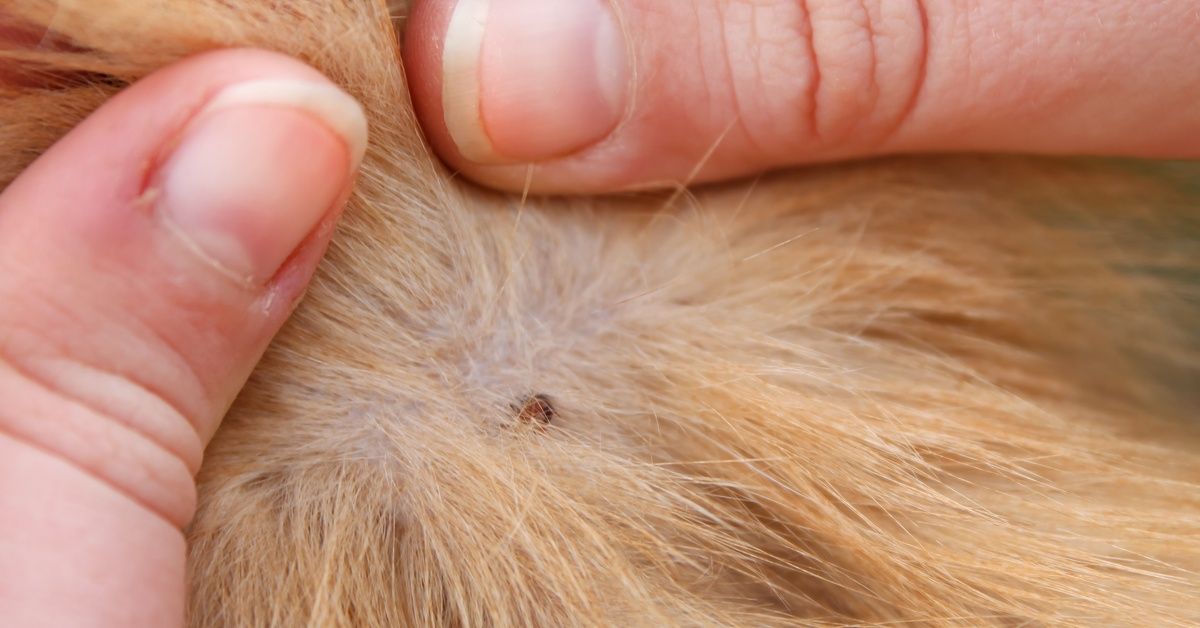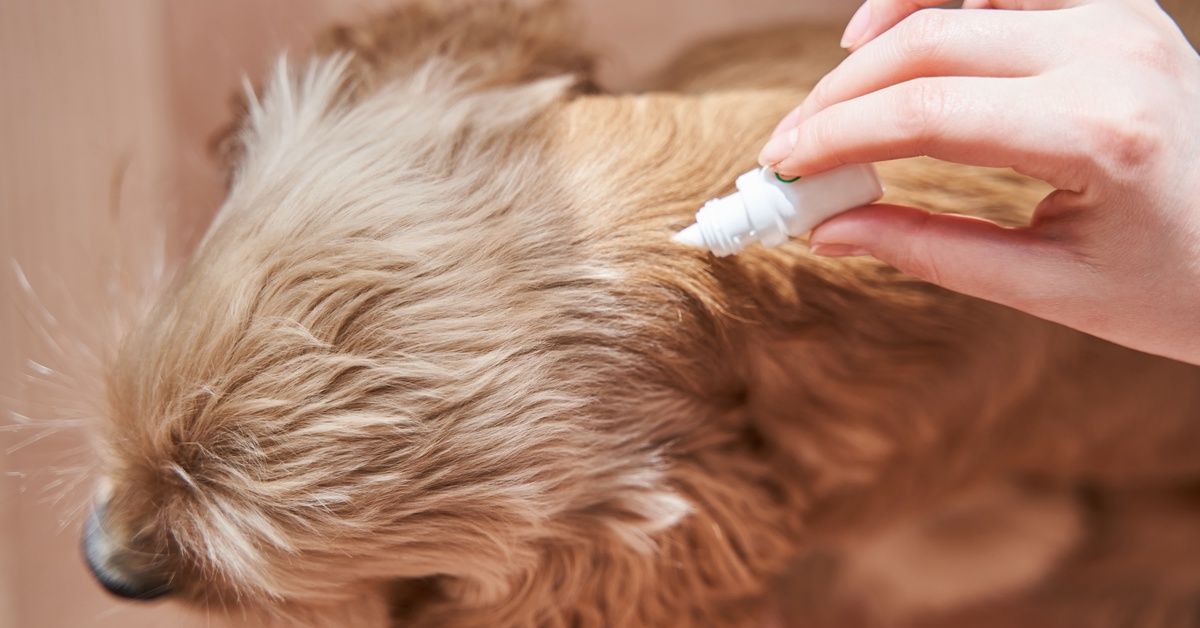How To Find and Remove Ticks From Your Small Dog
PP
Small dogs bring enormous joy to our lives, but their petite size can make them particularly vulnerable to tick-related health issues. Ticks pose a serious threat to our beloved companions, making regular tick checks and prompt removal essential for maintaining your furry friend's health and well-being.
Understanding how to correctly identify, remove, and prevent ticks will help you protect your small dog from dangerous tick-borne diseases while giving you confidence in your pet care routine. This comprehensive guide explains how to find and remove ticks from your small dog, keeping your companion safe from these persistent parasites.
Identifying Ticks on Your Dog

Ticks appear as small, dark, oval-shaped creatures that can range from the size of a pinhead to a small grape when engorged with blood. These parasites come in various colors, including brown, black, and reddish-brown, depending on their species and stage of development. When they first attach to your dog, ticks look flat and small, but they swell considerably as they feed.
Where to Check for Ticks
Small dogs require thorough inspection in several key areas where ticks commonly attach:
- Head and neck area: Check around the ears, inside ear flaps, and along the collar line
- Underarms and belly: Examine the warm, hidden spots where ticks love to hide
- Between toes and paw pads: Don't forget these easily overlooked areas
- Groin and rear end: Inspect carefully around the tail base and genital areas
- Under the tail: Lift the tail gently to check this popular tick hiding spot
Run your hands slowly over your dog's entire body, feeling for small bumps or irregularities in the fur. Pay special attention to areas where the skin feels warm, as ticks gravitate toward these spots.
Recognizing Signs of Tick Bites
Watch for these common indicators that your small dog may have encountered ticks:
- Small, red, inflamed areas on the skin
- Excessive scratching or licking at specific spots
- Lethargy or decreased appetite
- Fever or difficulty walking
- Swollen lymph nodes near bite areas
Early detection makes removal easier and reduces the risk of disease transmission, so incorporate daily tick checks into your grooming routine.
Step-by-Step Guide to Removing Ticks
Before attempting tick removal, collect these essential items:
- Fine-tipped tweezers or specialized tick removal tool
- Disposable gloves to protect your hands
- Antiseptic solution or rubbing alcohol
- Cotton balls or gauze pads
- Small container with lid for tick disposal
- Magnifying glass (helpful for tiny ticks)
The Removal Process
Follow these careful steps to remove ticks from your small dog safely:
- Calm your dog: Keep your pet still and relaxed during the process. Have someone help hold your dog if necessary.
- Locate the tick's head: Part the fur around the tick and identify where it is attached to the skin.
- Grasp with tweezers: Using fine-tipped tweezers, grab the tick as close to your dog's skin as possible, right at the head or mouth parts.
- Pull steadily upward: Apply gentle, steady pressure and pull straight up without twisting or jerking motions.
- Check for complete removal: Examine the tick to ensure you removed the entire parasite, including the head and mouth parts.
- Don't crush the tick: Avoid squeezing the tick's body, as this can push infectious materials into your dog.
Post-Removal Care
After successful tick removal, proper wound care helps prevent secondary infections:
- Clean the bite area thoroughly with a dog-safe antiseptic solution
- Apply a small amount of antibiotic ointment if recommended by your veterinarian
- Monitor the area for signs of irritation or infection over the following days
- Keep the bite site clean and dry during the healing process
What to Watch For
Observe your small dog carefully for several weeks following tick removal. Contact your veterinarian if you notice:
- Increasing redness, swelling, or warmth around the bite site
- Pus or unusual discharge from the wound
- Development of a rash or bullseye pattern around the bite
- Changes in appetite, energy level, or behavior
- Limping, joint swelling, or signs of pain
Proper Tick Disposal
Dispose of removed ticks safely to prevent them from reattaching to your pet or family members:
- Place the tick in a small container with rubbing alcohol
- Seal the container tightly and dispose of it in your regular trash
- Wash your hands thoroughly with soap and warm water
- Clean your tweezers with an antiseptic solution before storing them
Preventing Future Tick Bites

Work with your veterinarian to establish an effective tick prevention routine:
- Topical treatments: Monthly spot-on applications that repel and kill ticks
- Oral medications: Chewable tablets that provide systemic protection
- Tick collars: Long-lasting collars that release active ingredients gradually
- Sprays and shampoos: Additional protection for high-risk situations
Your veterinarian can recommend the most appropriate prevention method based on your dog's size, age, health status, and local tick populations.
Environmental Management
Reduce tick exposure around your home and yard:
- Keep grass cut short and remove leaf litter where ticks hide
- Create gravel or wood chip barriers between wooded areas and your lawn
- Remove brush piles and clear tall weeds from your property
- Consider professional pest control treatments for severe infestations
- Install fencing to keep wildlife that carry ticks away from your yard
When to Consult a Veterinarian
Schedule an urgent veterinary appointment if your small dog exhibits these serious symptoms:
- Difficulty breathing or rapid panting
- Loss of coordination or wobbling when walking
- Severe lethargy or inability to stand
- High fever or significant changes in body temperature
- Vomiting, diarrhea, or complete loss of appetite
- Seizures or other neurological symptoms
Routine Follow-Up Care
Even after successful tick removal, consider veterinary consultation for:
- Testing for tick-borne diseases if your dog was attached for more than 24 hours
- Professional advice on prevention strategies for your specific area
- Annual wellness exams that include tick-borne disease screening
- Vaccination recommendations based on local disease risks
Protecting Your Small Dog's Health
Regular tick prevention and prompt removal are essential components of responsible small dog ownership. By learning how to identify and remove ticks from your small dog, you provide your beloved companion with the best possible protection against these dangerous parasites.
Remember that small dogs depend entirely on us for their health and safety. Taking proactive steps to prevent tick encounters and responding quickly when you find these parasites helps ensure your furry friend enjoys a long, healthy, and happy life by your side.
If you're considering adding a small dog to your family, the caring team at Precious Petite Puppies offers beautiful teacup puppies for sale in Georgia. Our adorable companions receive comprehensive veterinary care, including tick prevention education, to help you start your journey as a small dog owner with confidence. Visit us to meet your perfect petite companion and learn more about providing the loving care these special dogs deserve.
